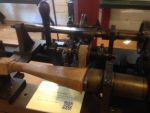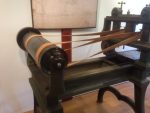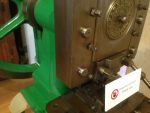Sewing robots. Although spinning and weaving have long been highly mechanized, the final phase of the apparel-making value chain has resisted automation:
IN 1970 William J. Bank, president of the Blue Jeans Corporation, predicted that there would be a man on Mars before the production of apparel was automated. Almost half a century later, he has not yet been proved wrong.
But that may change soon, given recent development in robotic sewing. Two companies, Softwear Automation (Atlanta) and Sewbo (Seattle) are pursuing different strategies: Softwear’s approach is to create computer vision and robotic manipulation which is intelligent and subtle enough to deal with highly flexible fabric, whereas Sewbo’s approach is to temporarily stiffen the fabric in order to make working with it more like metalworking.
Depending on how well these systems work in practice, and how the technology evolves, they may turn out to be not only the robots of the week, but the robots of the year or even the decade. Apparel-making is a vast industry, concentrated in nations which are not-so-well-off economically, and employs a large number of people. A high level of automation would likely result in much of this production being relocated closer to the markets, thus saving transportation costs and shortening supply cycles. The consequences for countries like China, Bangladesh, and Sri Lanka could be pretty unpleasant.
Most likely, unforeseen problems will slow the full deployment of these systems and an Apparel Apocalypse will not occur. It would certainly be wise, though, for the leaderships of apparel-manufacturing-intensive countries to focus on the need to develop a broader employment base.
More here.
See also my post on 3d knitting











